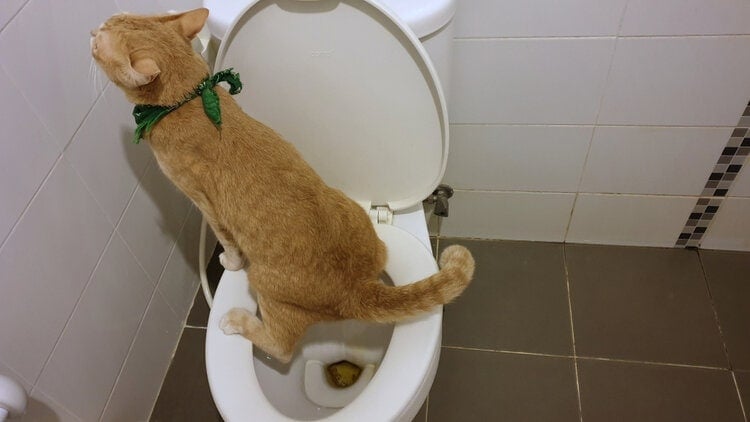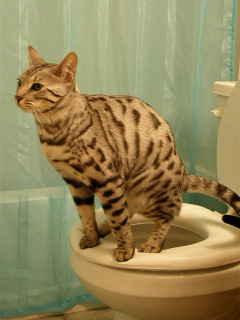The Risks of Flushing Cat Poop in Your Toilet - Precautionary Steps
The Risks of Flushing Cat Poop in Your Toilet - Precautionary Steps
Blog Article
How do you actually feel on the subject of Can You Flush Cat Poop Down The Toilet??

Intro
As pet cat proprietors, it's vital to bear in mind just how we deal with our feline good friends' waste. While it may seem practical to purge cat poop down the bathroom, this method can have damaging effects for both the setting and human health.
Environmental Impact
Flushing feline poop introduces unsafe virus and parasites into the water, presenting a substantial danger to aquatic ecosystems. These contaminants can negatively affect marine life and compromise water quality.
Health Risks
In addition to environmental problems, purging feline waste can also position health and wellness dangers to human beings. Pet cat feces may contain Toxoplasma gondii, a parasite that can trigger toxoplasmosis-- a potentially serious health problem, specifically for expecting females and individuals with weakened immune systems.
Alternatives to Flushing
Fortunately, there are much safer and extra responsible methods to deal with pet cat poop. Take into consideration the adhering to alternatives:
1. Scoop and Dispose in Trash
One of the most usual method of dealing with feline poop is to scoop it right into an eco-friendly bag and throw it in the garbage. Make sure to utilize a dedicated trash scoop and take care of the waste without delay.
2. Use Biodegradable Litter
Go with eco-friendly pet cat litter made from materials such as corn or wheat. These trashes are eco-friendly and can be safely thrown away in the trash.
3. Hide in the Yard
If you have a yard, think about hiding pet cat waste in a marked location far from veggie yards and water resources. Be sure to dig deep adequate to avoid contamination of groundwater.
4. Mount a Pet Waste Disposal System
Invest in a pet garbage disposal system especially created for pet cat waste. These systems make use of enzymes to break down the waste, decreasing smell and environmental influence.
Conclusion
Liable pet ownership extends beyond offering food and sanctuary-- it also involves proper waste management. By avoiding flushing feline poop down the toilet and choosing alternative disposal approaches, we can reduce our environmental impact and safeguard human wellness.
Why Can’t I Flush Cat Poop?
It Spreads a Parasite
Cats are frequently infected with a parasite called toxoplasma gondii. The parasite causes an infection called toxoplasmosis. It is usually harmless to cats. The parasite only uses cat poop as a host for its eggs. Otherwise, the cat’s immune system usually keeps the infection at low enough levels to maintain its own health. But it does not stop the develop of eggs. These eggs are tiny and surprisingly tough. They may survive for a year before they begin to grow. But that’s the problem.
Our wastewater system is not designed to deal with toxoplasmosis eggs. Instead, most eggs will flush from your toilet into sewers and wastewater management plants. After the sewage is treated for many other harmful things in it, it is typically released into local rivers, lakes, or oceans. Here, the toxoplasmosis eggs can find new hosts, including starfish, crabs, otters, and many other wildlife. For many, this is a significant risk to their health. Toxoplasmosis can also end up infecting water sources that are important for agriculture, which means our deer, pigs, and sheep can get infected too.
Is There Risk to Humans?
There can be a risk to human life from flushing cat poop down the toilet. If you do so, the parasites from your cat’s poop can end up in shellfish, game animals, or livestock. If this meat is then served raw or undercooked, the people who eat it can get sick.
In fact, according to the CDC, 40 million people in the United States are infected with toxoplasma gondii. They get it from exposure to infected seafood, or from some kind of cat poop contamination, like drinking from a stream that is contaminated or touching anything that has come into contact with cat poop. That includes just cleaning a cat litter box.
Most people who get infected with these parasites will not develop any symptoms. However, for pregnant women or for those with compromised immune systems, the parasite can cause severe health problems.
How to Handle Cat Poop
The best way to handle cat poop is actually to clean the box more often. The eggs that the parasite sheds will not become active until one to five days after the cat poops. That means that if you clean daily, you’re much less likely to come into direct contact with infectious eggs.
That said, always dispose of cat poop in the garbage and not down the toilet. Wash your hands before and after you clean the litter box, and bring the bag of poop right outside to your garbage bins.
https://trenchlesssolutionsusa.com/why-cant-i-flush-cat-poop/

I'm just very focused on Don’t flush cat feces down the toilet and I'm hoping you enjoyed reading the entire blog entry. Enjoyed reading our blog? Please share it. Let another person check it out. Many thanks for your time. Kindly check up our site back soon.
More Details Report this page